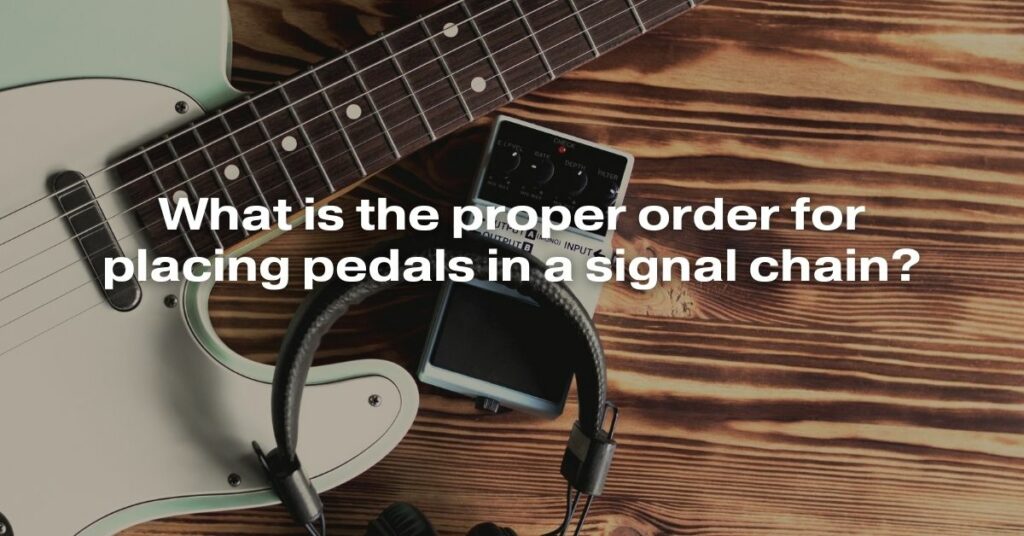Guitarists and musicians alike understand the importance of creating the perfect tone. Whether you’re a seasoned professional or just starting out, understanding the proper order for placing pedals in a signal chain is essential for crafting your desired sound. In this comprehensive guide, we will explore the intricacies of pedal placement, helping you unlock the full potential of your pedalboard.
1. Understanding the Basics: The Signal Chain
Before delving into the order of pedals, it’s crucial to grasp the concept of a signal chain. In simple terms, a signal chain is the order in which your guitar’s signal passes through various pedals before reaching the amplifier. The arrangement of these pedals significantly influences the final sound that you hear.
2. The Fundamental Rules
While there are no strict rules in music, there are general guidelines to follow when setting up your pedalboard. Here are the fundamental rules to consider:
Dynamic Pedals First: Start your signal chain with dynamic pedals like compressors and wah-wah pedals. These pedals affect the dynamics of your playing and work best when they receive a clean and unaltered signal.
Gain-Based Pedals: Next in line should be your gain-based effects, such as overdrive, distortion, and fuzz pedals. These pedals manipulate the core tone of your guitar, so placing them after dynamics pedals ensures they receive a consistent input level.
Modulation Effects: Pedals like chorus, flanger, phaser, and tremolo come after gain-based pedals. Modulation effects modify the tone without drastically changing the core sound, making them ideal for this position.
Time-Based Effects: Delay and reverb pedals, which alter the spatial aspects of your sound, should be placed at the end of the signal chain. These pedals create ambient textures and work best when they receive a fully processed signal from other effects.
3. Pedal-Specific Considerations
While the fundamental rules provide a solid foundation, certain pedals have unique requirements:
Effects Loop: Some amplifiers feature an effects loop, allowing you to place modulation and time-based effects after the preamp stage. This setup can yield a cleaner sound, especially if you rely heavily on amp distortion.
Parallel Processing: Experiment with parallel processing by splitting your signal into two paths. One path remains dry, while the other passes through your pedals. After processing, blend the dry and wet signals back together. This technique preserves the clarity of your original tone while adding effects.
4. Experimentation and Personal Preference
Although guidelines are valuable, every guitarist has unique preferences. Don’t hesitate to experiment with different pedal arrangements to discover what works best for your style and sound. Trust your ears; if it sounds good to you, it is good.
Conclusion
Understanding the proper order for placing pedals in a signal chain is essential for achieving the desired tone and maximizing the potential of your pedalboard. By following the fundamental rules, considering pedal-specific requirements, and allowing room for experimentation, you can create a customized setup that perfectly complements your playing style. Remember, the key is to have fun and let your creativity guide you as you explore the vast world of guitar effects.


